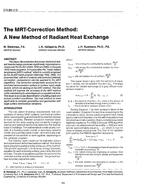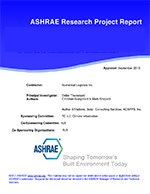Restructuring of the electric power industry has introduced new opportunities for power system operators independent of large utilities. Of particular interest are distributed generation (DG) systems involving combined heat and power (CHP). These systems often generate electricity at lower fuel efficiency than the large power plants but can utilize the reject heat for a variety of purposes (e.g., HVAC), thus achieving better overall efficiency and reduced emissions.
Compatibility between the prime mover and the heat-activated heat pump, forming the CHP system, must be ensured not only at the design point but over the entire range of operating conditions. Often, either the prime mover or the heat pump must operate at part load. Under these conditions, the majority of CHP systems attempt to optimize the power generation side, with lower priority given to the reject heat utilization. Most papers and studies to date have not addressed the problem of part-load operation.
The objective of this work has been to investigate and propose ways to ensure internal compatibility under part-load operation. In particular, the goal is to maximize the utilization of available waste heat under all conditions. A CHP system consisting of a microturbine and an absorption chiller has been investigated, and operation under part load analyzed. The addition of an auxiliary desorber (generator) to the absorption system makes it possible to maximize the waste heat utilization from the turbine, while the latter operates at part load and full cooling capacity is still required. The auxiliary desorber enables operation of the heat pump at overall capacities exceeding the nominal with little interference of the added backup heat with the waste heat. Simulation results for the system with auxiliary desorption are described.
Units: SI
Citation: Symposium, ASHRAE Transactions, vol. 109, pt. 1
Product Details
- Published:
- 2003
- Number of Pages:
- 8
- File Size:
- 1 file , 200 KB
- Product Code(s):
- D-16811


